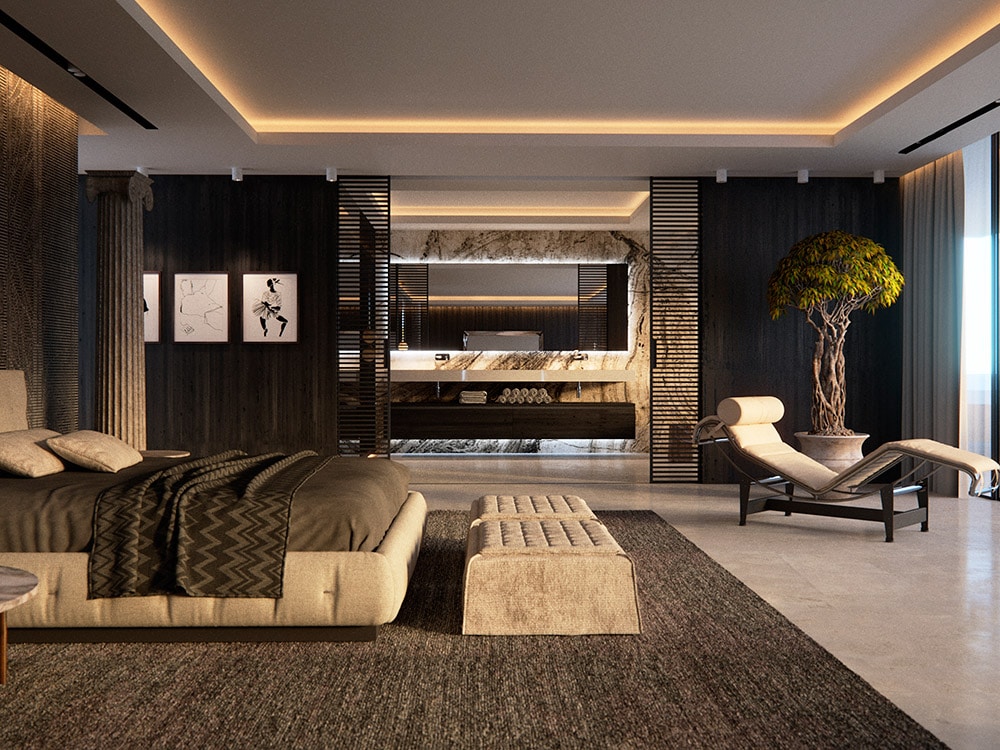
Sleep better with these interior design tips
We spend nearly one third of our lives asleep and the actual space we sleep in has a tremendous influence on the quality and length of our sleep. Better interior design really does help you sleep better!
An incredible 45% of us suffer from sleep disorders – that’s 3.15 billion people – so no need to feel alone in your affliction! As a nation, the Dutch seem to do the best of all us and manage to get an amazing average of 8 hours sleep every night. Followed closely by the New Zealanders and the French. Japan and Singapore fare the worst, sleeping a whole half an hour less than the rest of us.
In the UK a staggering 70% of us sleep less than 7 hours per night. Sleep deprivation is sadly on the rise. Back in 2010 it was only 27% of us that suffered, now it’s 33%.
Sleeping even half an hour less than you need can be detrimental to you health as it has a cumulative effect. So if you’re thinking about going out again tonight, don’t do it, you need the rest!
We often don’t realise how much our bedroom environment can affect the quality of our sleep. Our surroundings affect us in powerful ways. Apply these tips to your bedroom and see what happens.
Sleep Better – Tip 1: Temperature
The ideal temperature for a good sleep is between 18-21 degrees centigrade. If it’s hotter than that in your room invest in a ceiling fan. This is healthier than air conditioning whilst you sleep.
Sleep Better – Tip 2: Darkness
If you don’t have blinds, or thick curtains, you need to invest in some. You need to sleep in complete darkness. If you can see your hand it’s too light. Whilst on the subject of light you need to start reducing your exposure to blue light about 3 hours before you actually go to bed. So that habit of working on the computer or iPad an hour before you try to sleep will have to be ditched!
Sleep Better – Tip 3: Nature
Add plants to your room as well as paintings of nature. Carole Shearn is a horticultural expert who suffers from asthma and says that plants help her to breathe easier. Plants clean the air and are great home detoxifiers. Carole says: “Don’t be put off by the old wives’ tale that you shouldn’t have plants in your bedroom. The amounts of carbon dioxide they throw out at night through photosynthesis is absolutely minimal. Plants are the oldest and most human-friendly air filters on the planet.”
Sleep Better – Tip 4: Colour
Ideally your bedroom should have cool or neutral colours like blues, greens and greys. These colours reduce your heart rate, lower your blood pressure and slow down your breathing rate – all good conditions in which to begin a night of great sleep!
Sleep Better – Tip 5: Clean up!
Invest in some sleek cupboards or stylish cabinets. Clutter around your room will do the opposite of relax you. Every time we see a mess it stresses us out a little bit. Your bedroom is for relaxation, rest and romance, nothing else! If you have exercise equipment, gaming areas or computers in your bedroom they don’t belong there, get rid of them! Only items that relax you, and as little of them as possible. Think zen. Think calm.
Sleep Better – Tip 6: Cosy up
Decorate with lots of cosy cushions and plush, luxury rugs. As well as looking gorgeous they will help to muffle noise. Just make sure you keep them clean so that dust doesn’t become an issue.
Sleep Better – Tip 7: Listen to your senses
It’s not just what we see in our bedroom that can hinder sleep. What do our other senses tell us? Well, sound wise your bedroom should be quiet. If you hate silence you might try going to sleep with some relaxing music, or sounds of the sea. What about smells? Use diffusers to fill your room with wonderful, relaxing smells like Lavender. (Stay away from Peppermint, Lemon, Orange or Mint – these are better for the morning). If you don’t have a diffuser put one drop of Lavender Essential Oil onto the light bulb of your reading lamp. And touch? Is your bedding really, truly comfortable? It should be silky soft, so choose cosy fabrics (silk or soft cotton in a high-thread count).
These simple tips can make a huge difference to your sleep. Interior design and thoughtful planning can transform your bedroom into a sleep sanctuary.





